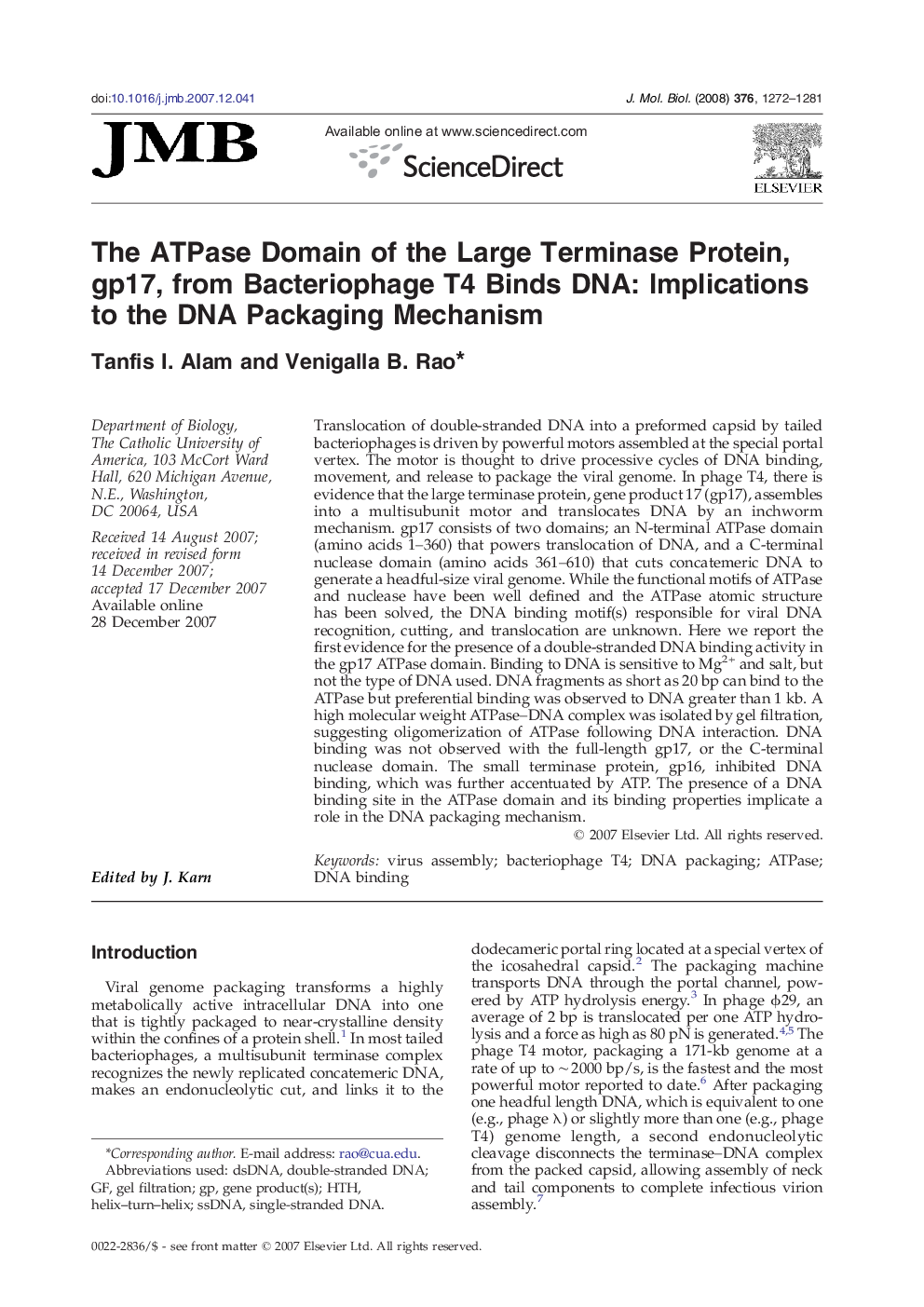| Article ID | Journal | Published Year | Pages | File Type |
|---|---|---|---|---|
| 2187716 | Journal of Molecular Biology | 2008 | 10 Pages |
Translocation of double-stranded DNA into a preformed capsid by tailed bacteriophages is driven by powerful motors assembled at the special portal vertex. The motor is thought to drive processive cycles of DNA binding, movement, and release to package the viral genome. In phage T4, there is evidence that the large terminase protein, gene product 17 (gp17), assembles into a multisubunit motor and translocates DNA by an inchworm mechanism. gp17 consists of two domains; an N-terminal ATPase domain (amino acids 1–360) that powers translocation of DNA, and a C-terminal nuclease domain (amino acids 361–610) that cuts concatemeric DNA to generate a headful-size viral genome. While the functional motifs of ATPase and nuclease have been well defined and the ATPase atomic structure has been solved, the DNA binding motif(s) responsible for viral DNA recognition, cutting, and translocation are unknown. Here we report the first evidence for the presence of a double-stranded DNA binding activity in the gp17 ATPase domain. Binding to DNA is sensitive to Mg2+ and salt, but not the type of DNA used. DNA fragments as short as 20 bp can bind to the ATPase but preferential binding was observed to DNA greater than 1 kb. A high molecular weight ATPase–DNA complex was isolated by gel filtration, suggesting oligomerization of ATPase following DNA interaction. DNA binding was not observed with the full-length gp17, or the C-terminal nuclease domain. The small terminase protein, gp16, inhibited DNA binding, which was further accentuated by ATP. The presence of a DNA binding site in the ATPase domain and its binding properties implicate a role in the DNA packaging mechanism.
